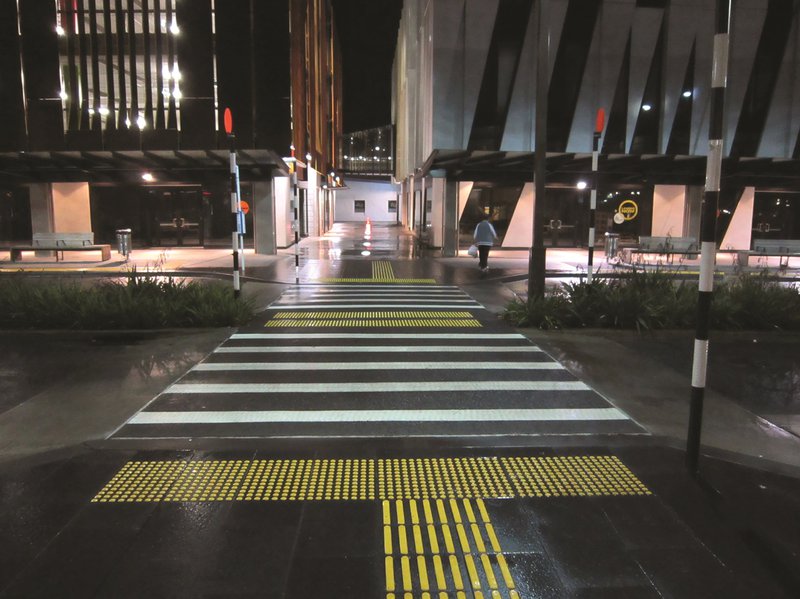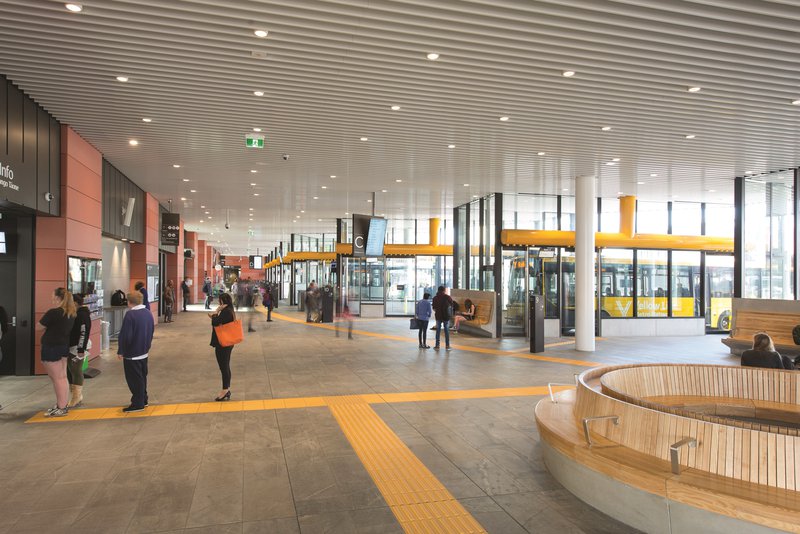20 Jun 2018
It mightn’t be the most obvious of crime-fighting tools, but environmental design is increasingly being used to improve safety on New Zealand streets.
The often-subtle design elements incorporated into what’s known as Crime Prevention through Environmental Design (CPTED) are now a key part of the thinking in the design of our urban areas.
Andrew McDonald CMEngNZ CPEng IntPE(NZ), a Principal Traffic Engineer at GHD, has developed extensive knowledge of CPTED. He’s professionally accredited through the National Institute of Crime Prevention in the United States and presents on the subject to New Zealand engineering professionals.
“Historically, little consideration was given to CPTED in urban areas but now it’s attracting more of an emphasis.”
Four principles broadly define CPTED: surveillance, access management, territorial reinforcement and quality environment. They overlap and are mainly applied to public spaces, as well as certain private areas the public use, such as educational facilities.
Creating a sense of surveillance underpins much of the approach, Andrew says. This can be achieved through measures such as ensuring a space is overlooked by neighbouring businesses, or designing a thoroughfare that generates enough people to keep an eye out for others.
It’s often the minimal and least costly design elements that have a powerful impact on urban safety. For example, lighting. Good lighting, Andrew says, illuminates a whole area, not just the surface level of someone’s line of sight, improving their ability to see a lurking figure in the distance.
“Poorly designed lighting can create harsh shadows – because your eyes are adjusting to bright light you won’t even see someone in the shadow.”

Clear sight lines and lighting at New Lynn train station in Auckland. Photo: Duncan Rothwell
Then there’s the “power of paint”.
“With murals, as a good example, what they often incorporate into the picture is people, because that creates the perception of surveillance. Eyes, particularly, make you feel you’re being watched whereas a blank wall creates that opportunity for criminal behaviour.”
While CPTED has been around for some time in New Zealand, only in recent years has it come together as an organised discipline, evident in its increasing application in urban design. In 2005, the Ministry of Justice released national CPTED guidelines, forming the basis of much of the design councils use in street upgrades and urban revitalisation projects.
Environments are assessed by the police as part of the ‘crime triangle’ of prevention – the victim, the offender and the opportunity.
CPTED calls on the expertise of many – engineering and design professionals, councils, community groups and residents – in collaboration with the police.
Inspector Paula Holt of the New Zealand Police National Prevention Centre says CPTED can have a significant impact on preventing crime.
“Environments are assessed by the police as part of the ‘crime triangle’ of prevention – the victim, the offender and the opportunity. In order for a crime to occur, there needs to be each of those elements present. By changing the environment or location, and making it safer, we can prevent victimisation and help people be safe and feel safe.”
She’s encouraged to see others in the community engaging in the CPTED approach to crime reduction over the past few years.
“Many community patrollers and members of the public have completed CPTED training and apply these principles when out on patrol. Police work closely with councils to complete safety audits to ensure our communities are safe, and make changes when necessary.
“The more individuals, businesses, and urban planners are aware of the environment they create – and its impact on feelings of safety and in limiting opportunities for crime – the more effect it’s likely to have on overall crime rates.”
Rebuilding a safer Christchurch
Following the Canterbury earthquakes, the Christchurch City Council used CPTED principles in various rebuild projects. CPTED was widely applied to the city’s main transport hub, the Bus Interchange, which before its completion in 2015 was something of a crime hotspot.
Features in the redeveloped facility include visually permeable barriers, wide open spaces and toilet amenities that open onto a shared, observable foyer. Safety is reported to have increased significantly in its first year of operation, with greatly reduced police callouts.
Many of the city’s other anchor projects use CPTED, including the Avon River, justice, health, retail and performing arts precincts, the central library and the Metro Sports Facility.

Christchurch's redeveloped Bus Interchange. Photo: Otakaro Ltd
Safer public transport
Duncan Rothwell, Principal Urban Design Specialist at Auckland Transport, says it’s important the design of transport infrastructure incorporates CPTED principles.
“If we can ensure our transport network is as safe as possible, we can attract more people to use it.”
But he says safer environments don’t happen by chance.
“Research indicates the perception of crime or anti-social behaviour in transport environments can be a barrier for some, particularly the more vulnerable in our community.”
He says with surveillance in mind, Auckland Transport constantly looks at improving visibility by “opening up sightlines, facilitating ‘eyes on the street’ and attracting more activity and people into a place”.
“Some great examples of this can be as simple as using glazing in our train stations and bus shelters, lighting at bus stops, or introducing new cycleways into an otherwise underused park,” he says.
“We also look at how we can limit or encourage access to places and buildings to make them safer. Obvious examples are gates and fences around potentially vulnerable locations, or landscape screening in front of a blank wall, otherwise vulnerable to graffiti.”
The layout of transport infrastructure also needs to be easy for people to navigate with no entrapment spots, so they feel confident moving around, he says.
When scoping any new project with CPTED in mind, Auckland Transport assembles as much information as possible to get a good understanding of crime issues in the target area, including obtaining police incident reports and talking with local residents and businesses.
“With this information to hand, we undertake a site visit. It’s important we do this during the day and after dark, so we can get an idea of how the place feels and functions at different times.”
Duncan also recommends creating clearly defined boundaries that signal differences between public and more private spaces – an effect achieved by the new ticket gates at key Auckland train stations.
“Not only do gates cut down on fare evasion with access control, they also signal to users they’re moving into a more controlled environment where certain behaviours are expected.”
This story originally appeared in EG magazine. To subscribe to EG, email hello@engineeringnz.org
Header image credit: Otakaro Ltd





